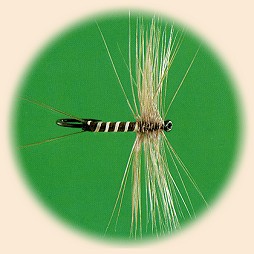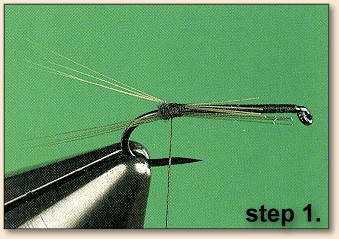
1. Position the thread at the tail-mounting point.
Using 3-4 Micro Fibetts on each side, form a dubbing-ball
split tail one shank-length long, as show here from above.
Keep the black dubbint small and tight. Do not clip the
excess.
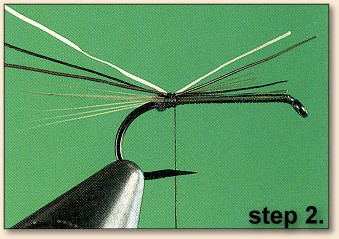
2. Clip a light hair and 2 dark hairs from a patch of moose
mane. Clip off 1/4 inch from the tip of each, and mount
them over the rearmost tailing wrap ahead of the dubbing
ball.
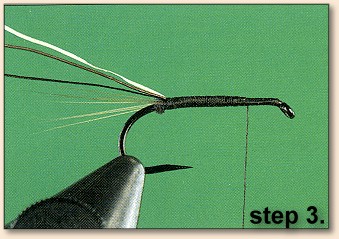
3. Use a flattened thread to bind the excess tail material
and hair tips to the shank, forming a smooth foundation
over the rear 3/4 of the shank. Trim any excess material,
and position the thread at the front of the foundation.
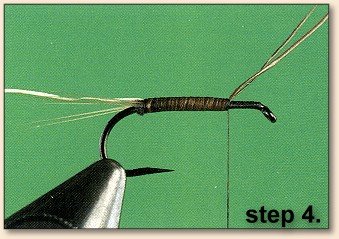
4. Wrap the dark hairs forward together up to the tying
thread, just as you would wrap a flat bard body. Tie off
and clip the excess. Position the thread at the rearmost
tie-off wrap.

5. Rib the abdomen with the light hair to make light and
dark bands of about equal width. Tie off and clip the
excess. Position the thread at the rear-most tie-off wrap.
Coat the abdomen with head cement for durability.
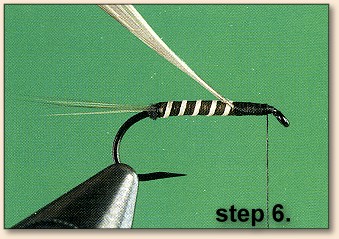
6. Prepare a dry-fly hackle one size larger than would
normally be used for the hook size. Mount it directly
ahead of the abdomen as shown, forming a smooth
foundation. Position the thread behind the hook eye.
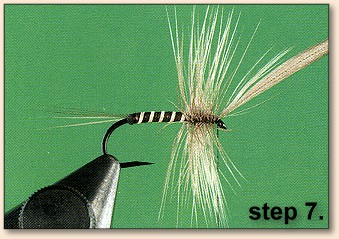
7. Wrap and tie off the hackle as shown...Clip the feather
tip, and finish the fly.
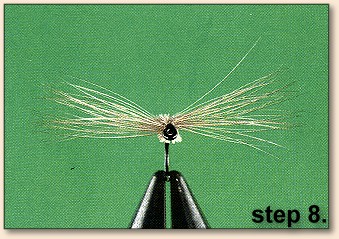
8. Trim the hackle barbs that project above and beneath the
shank, leaving only the barbs that extend outward from the
sides of the hook, as shown in this front view. ~ TL and JS

